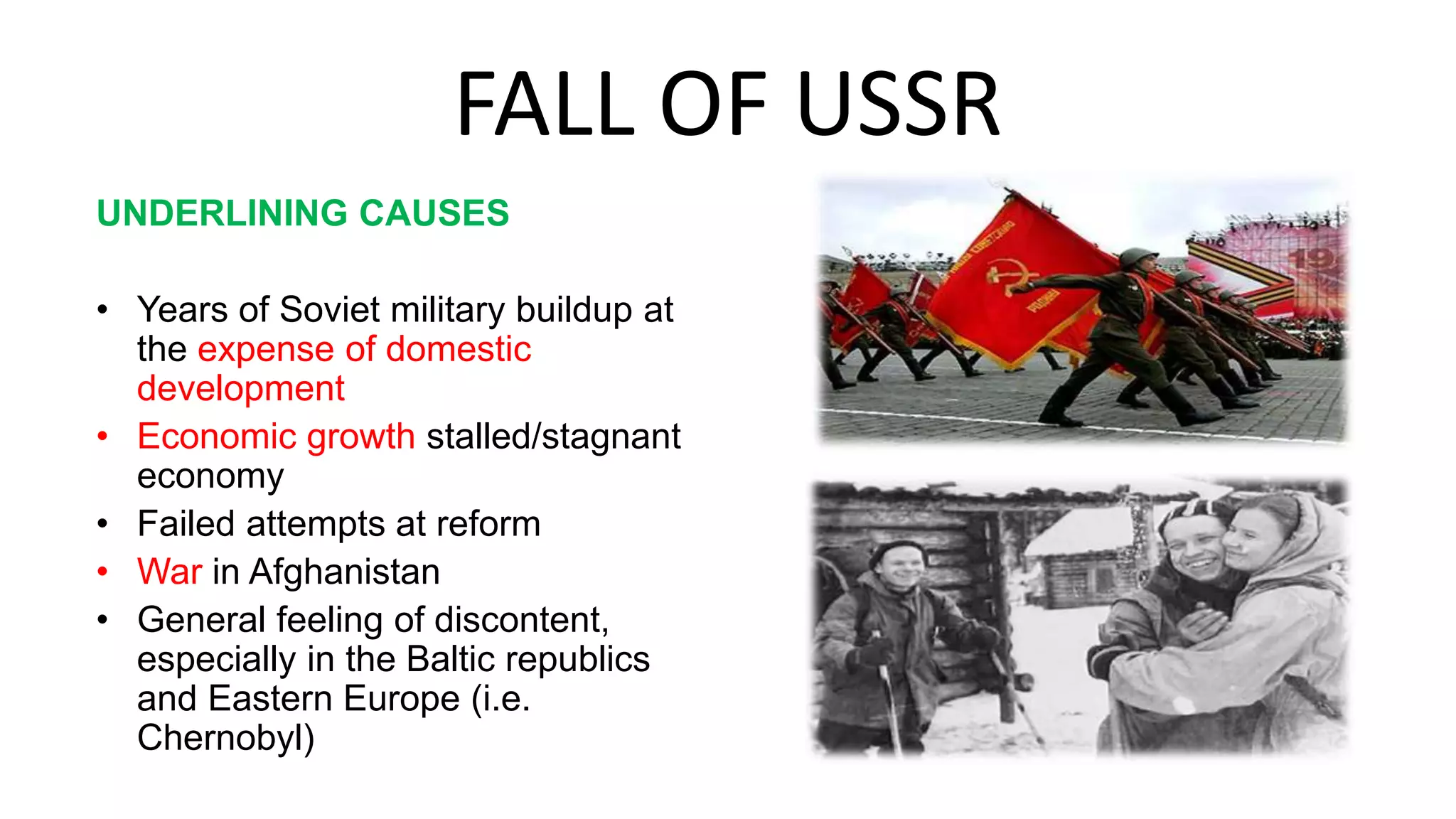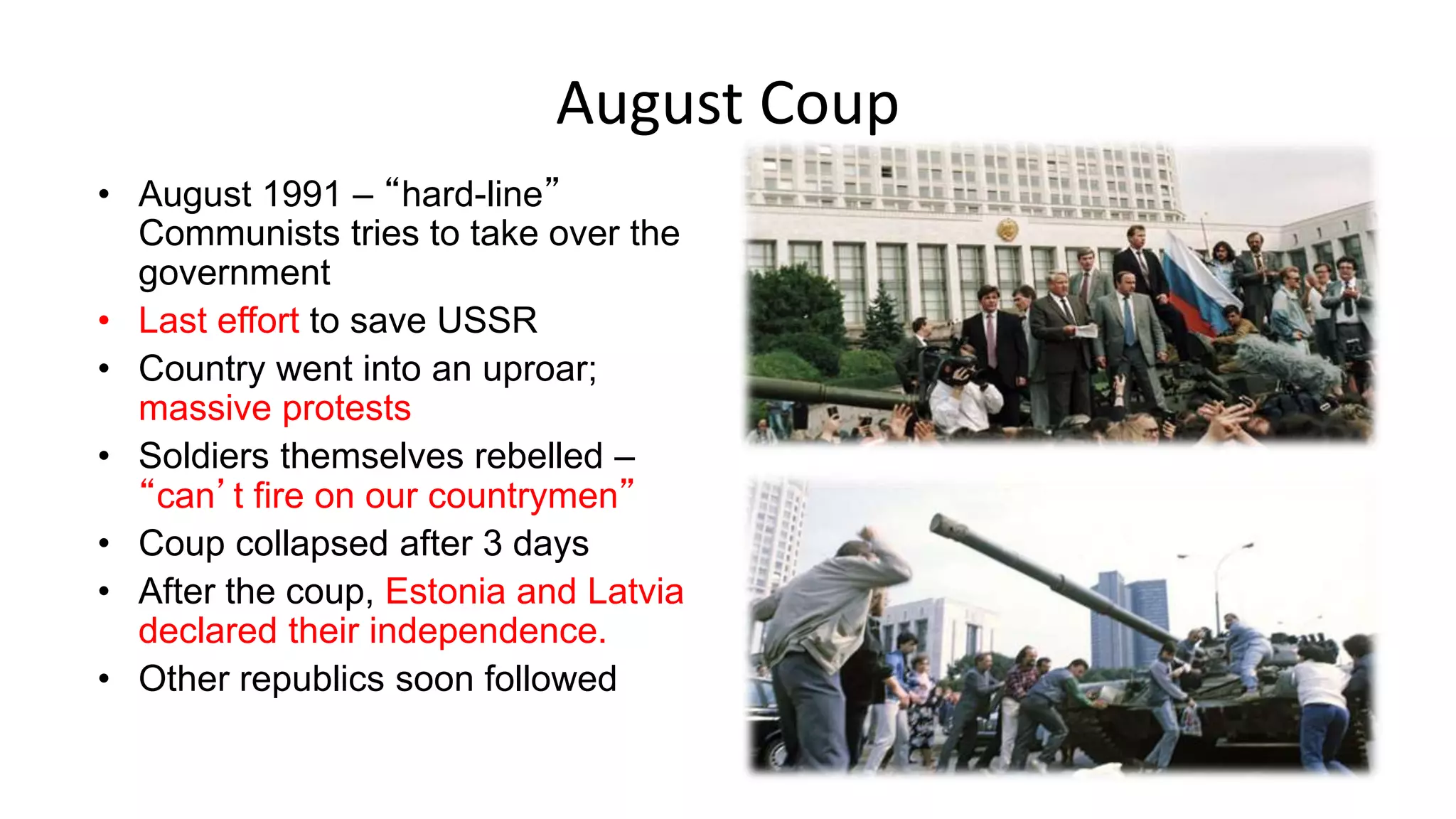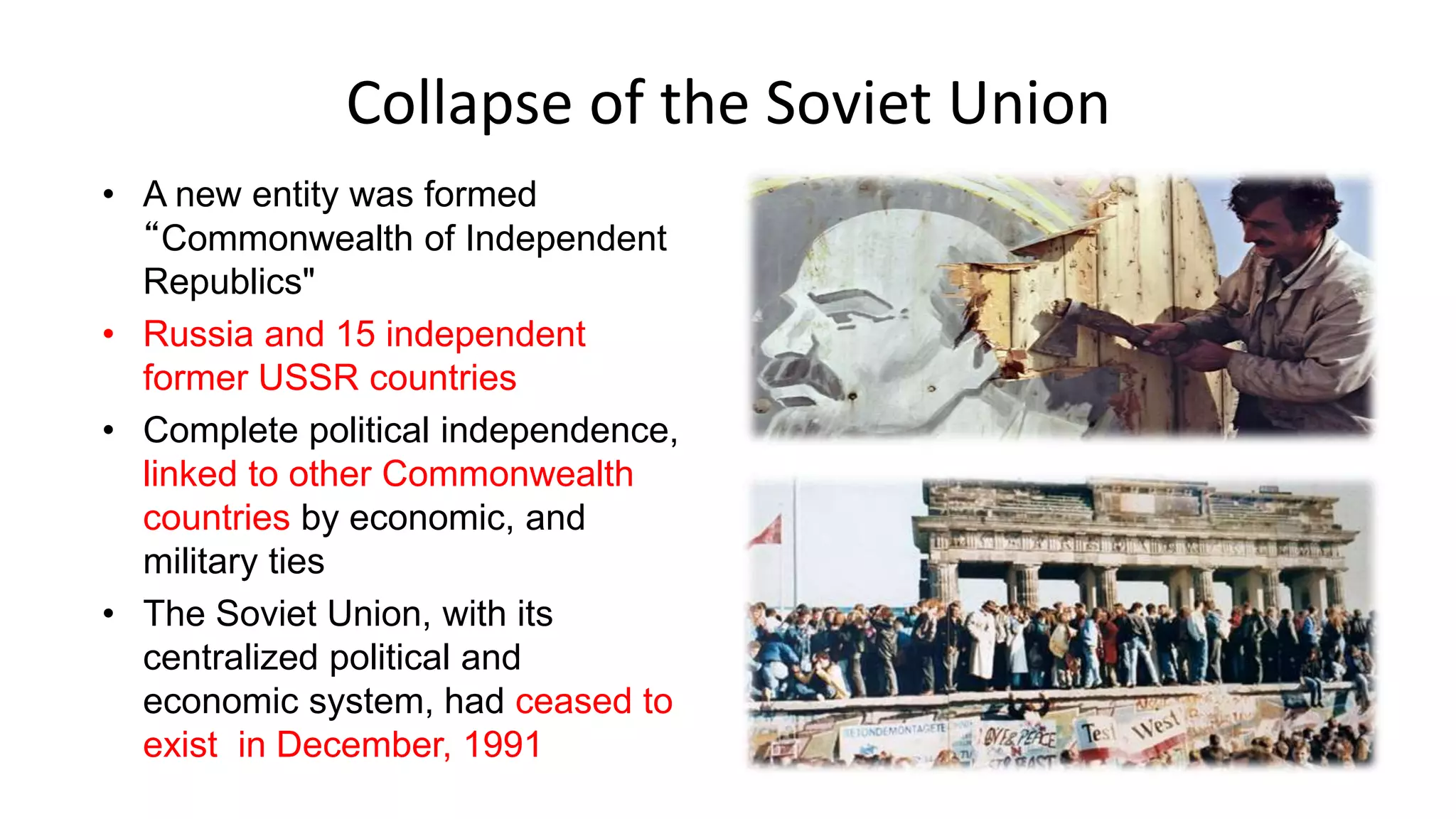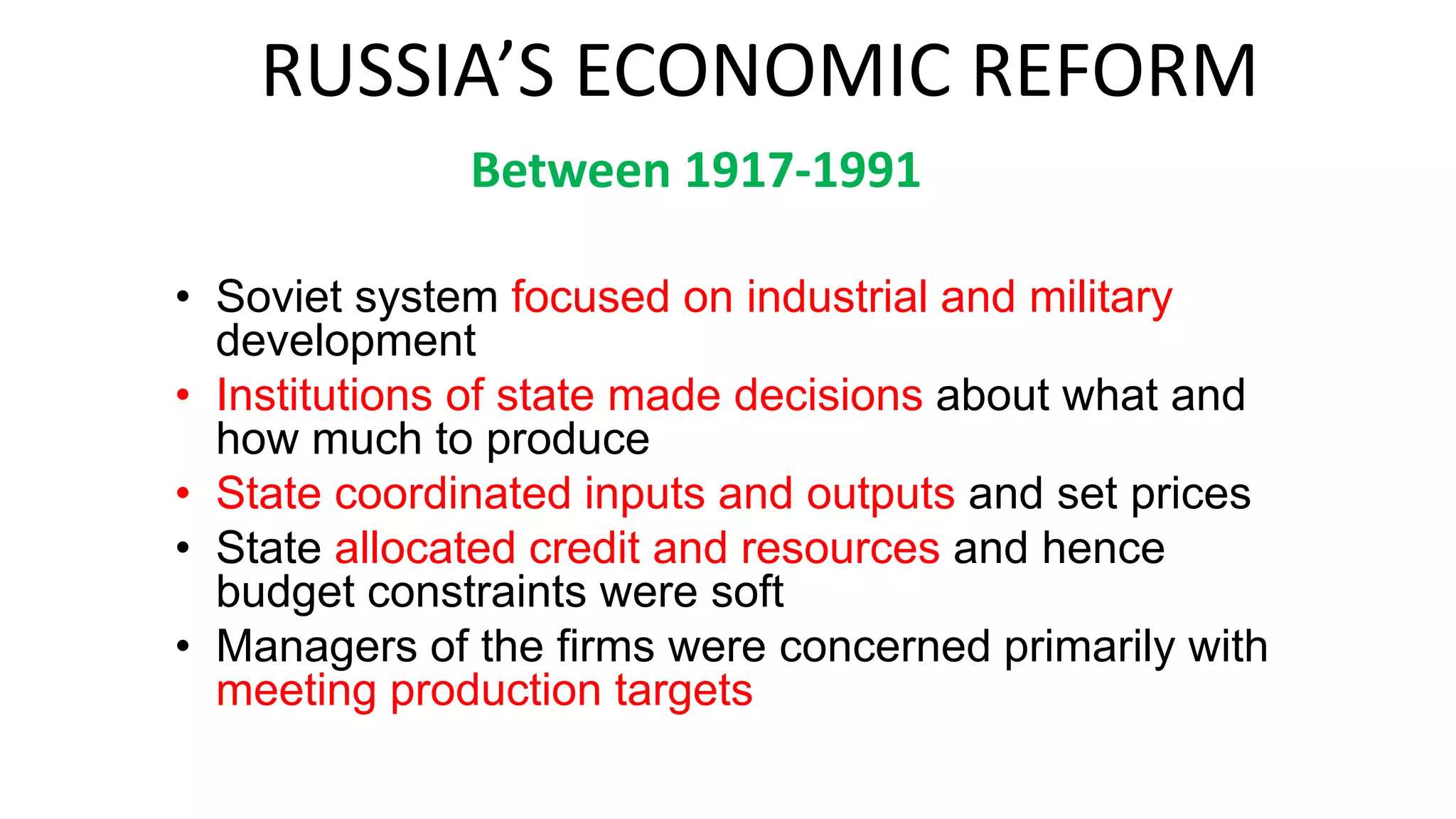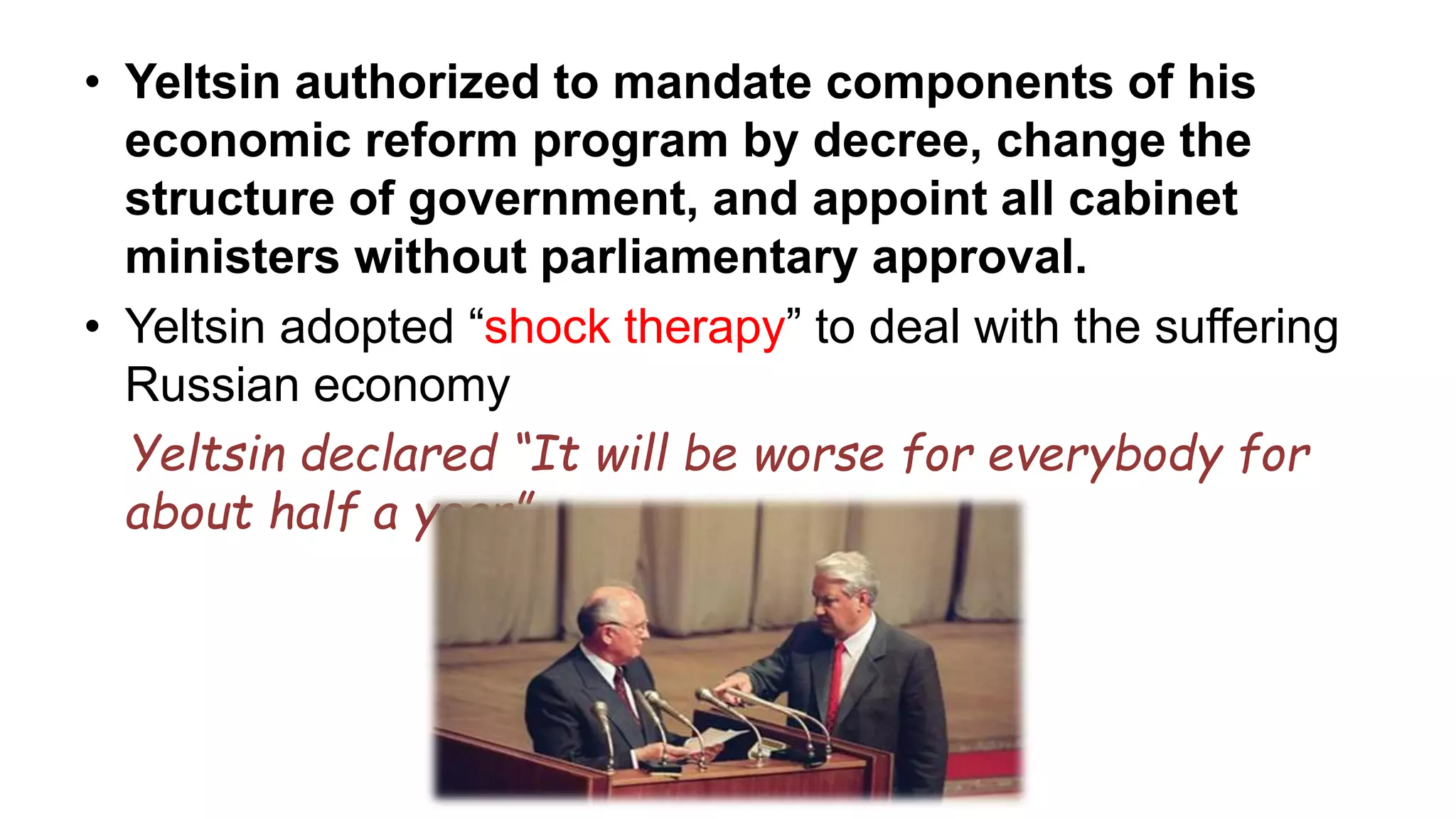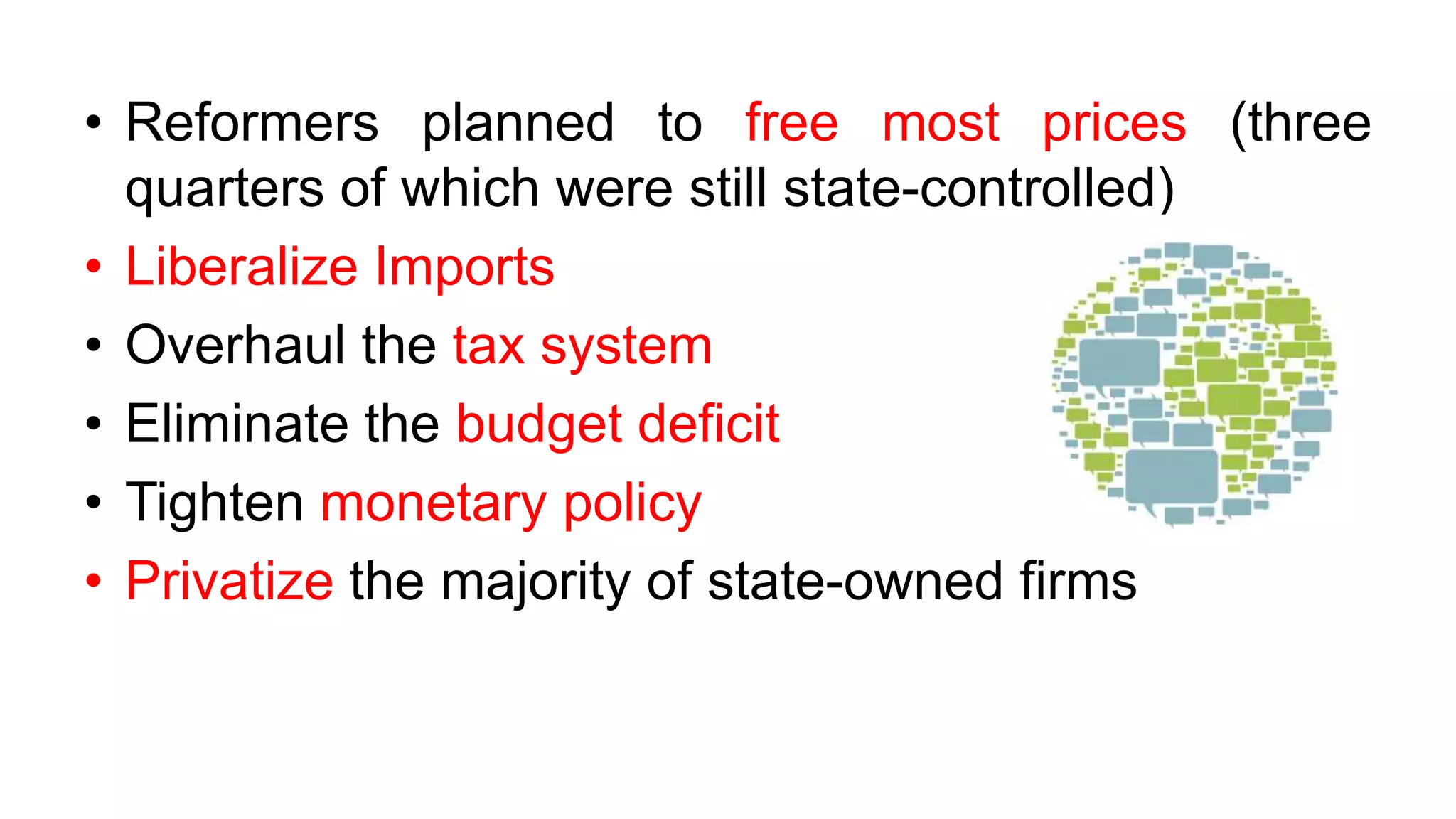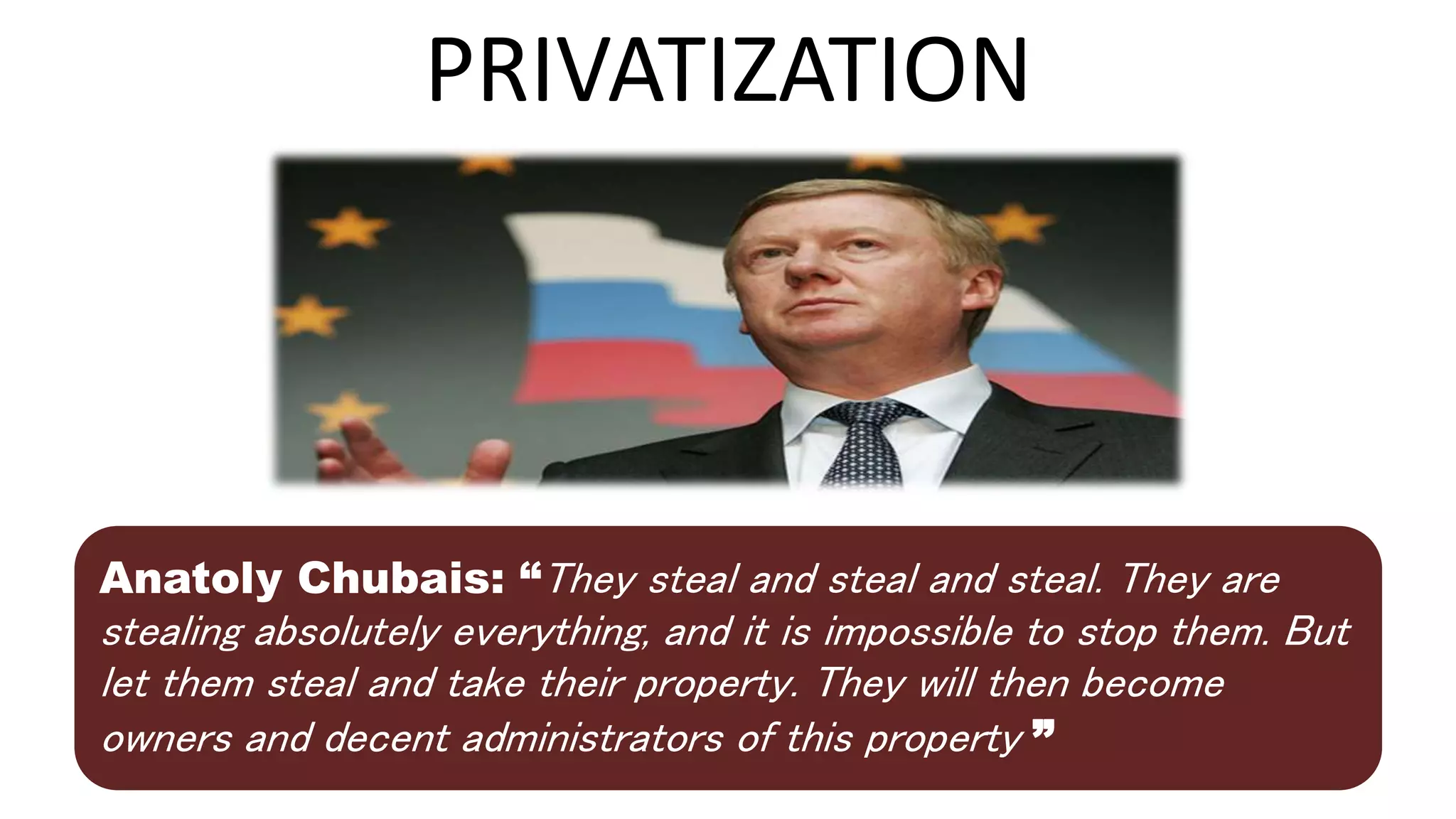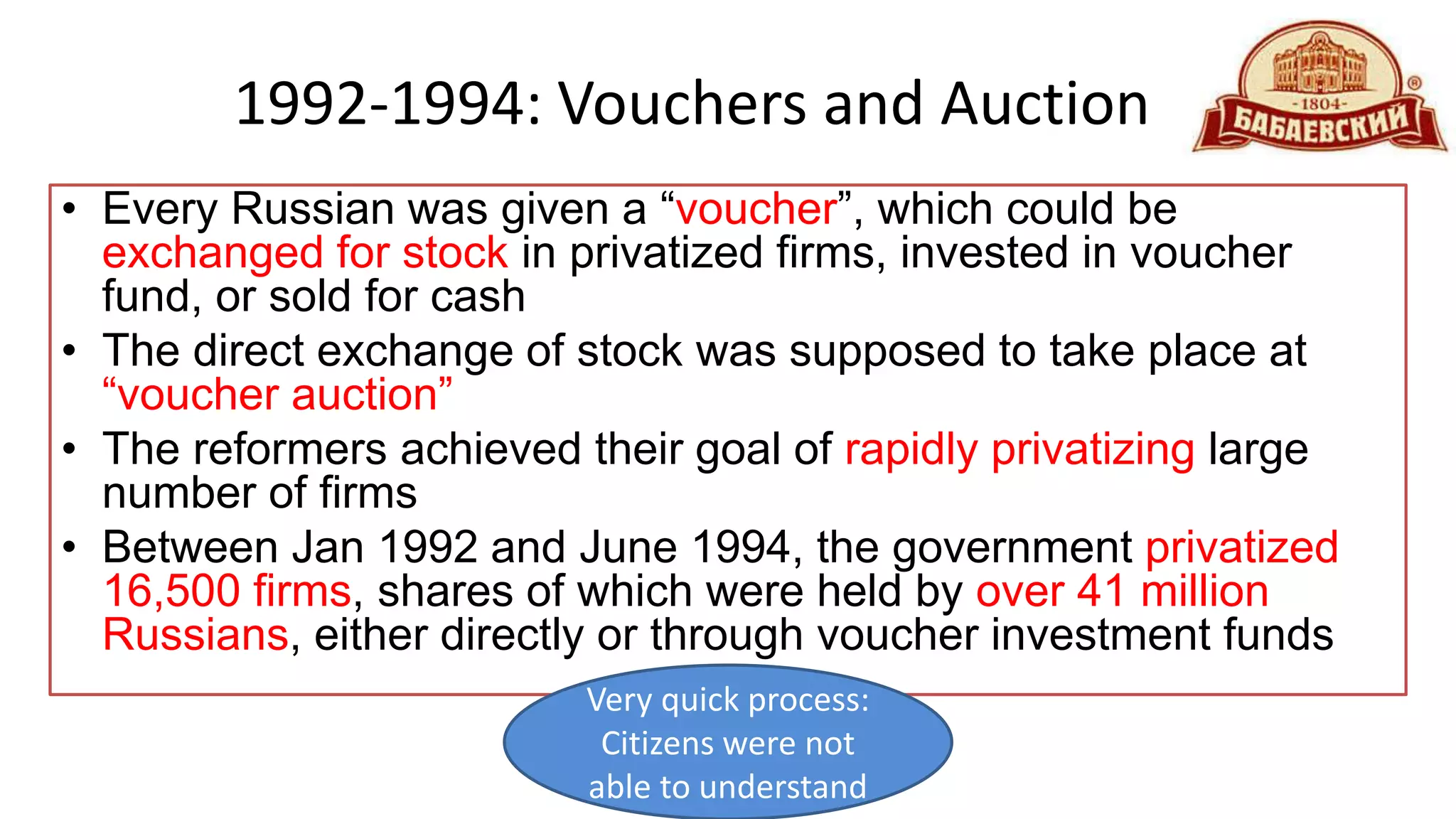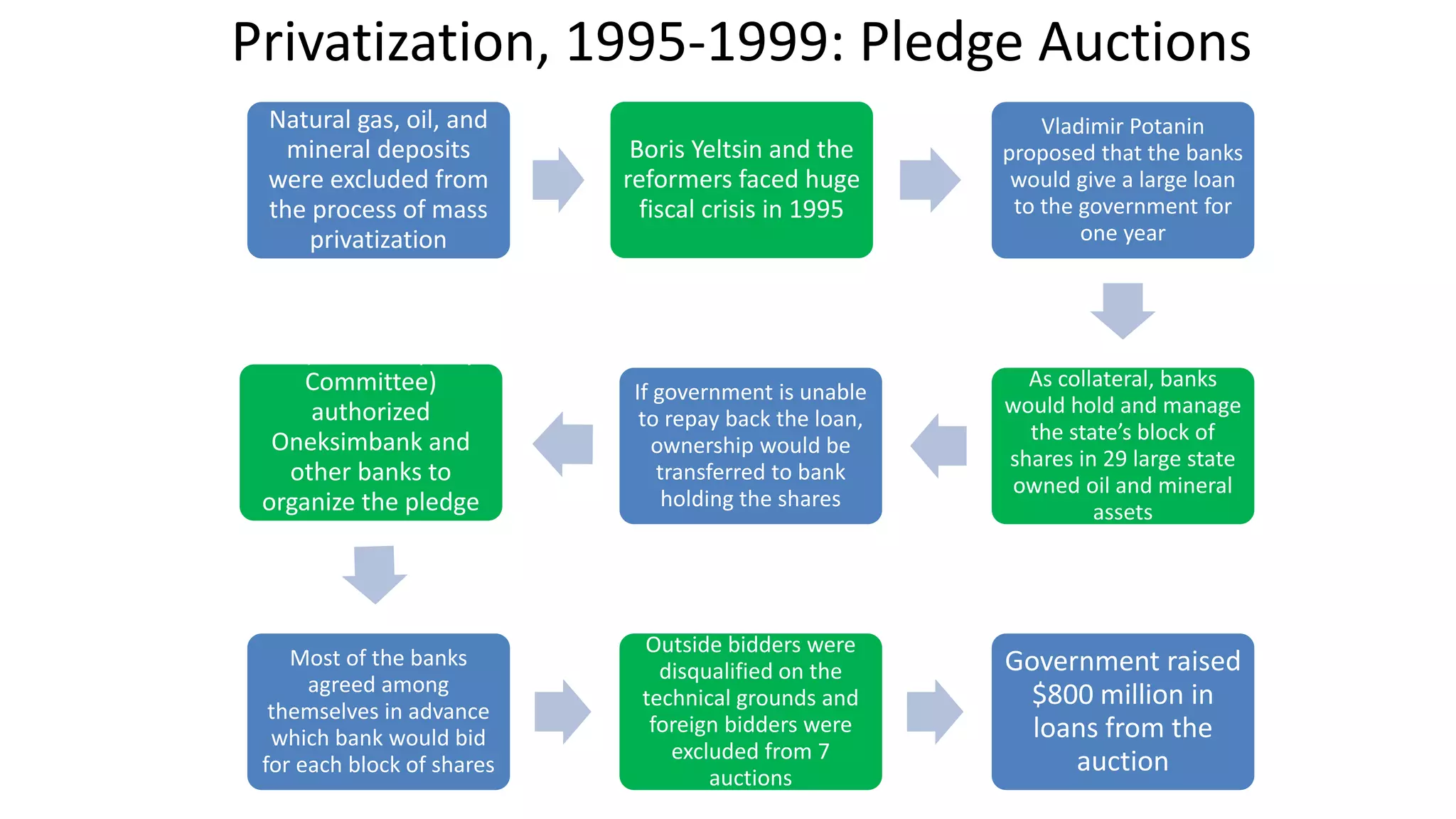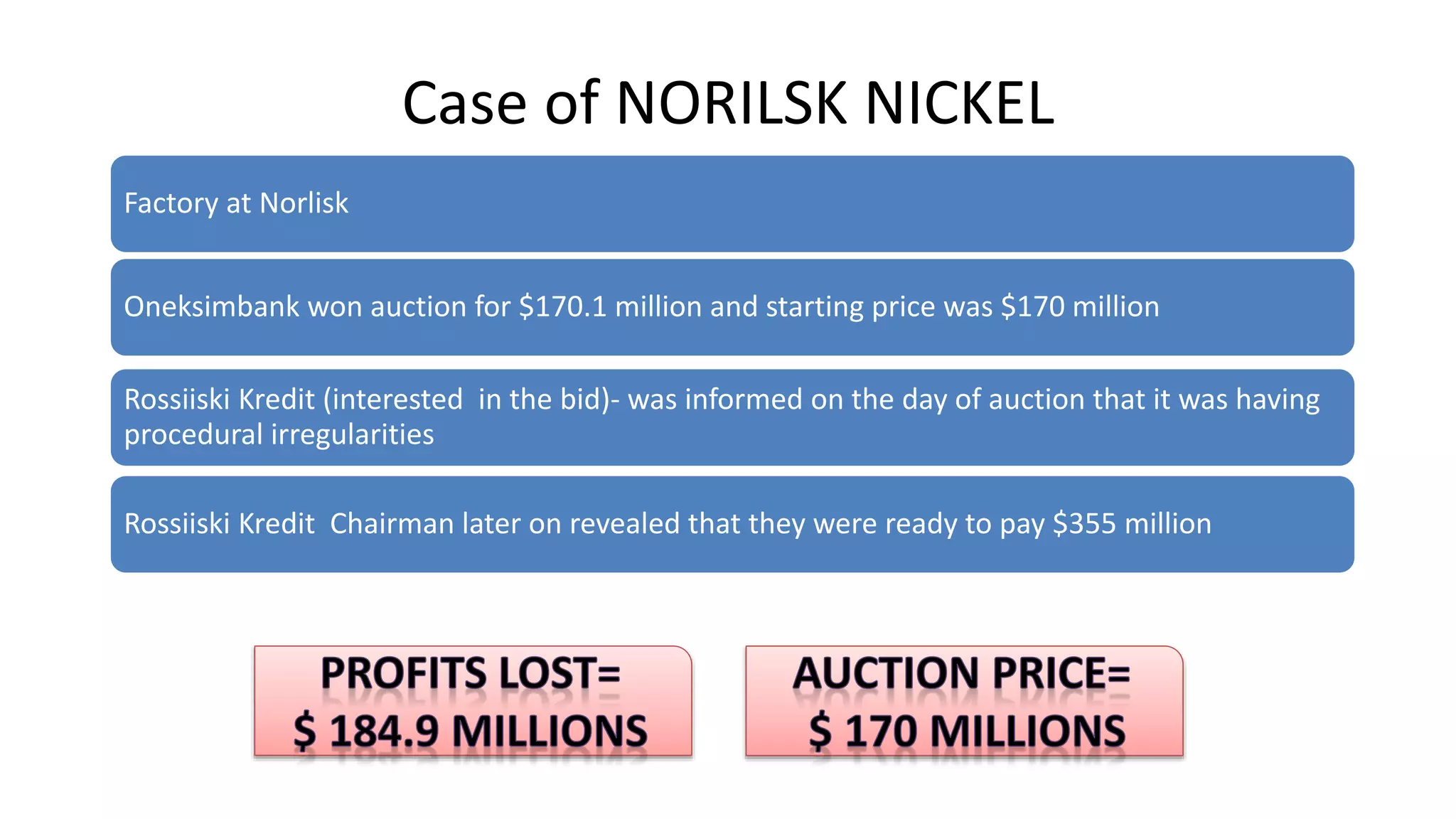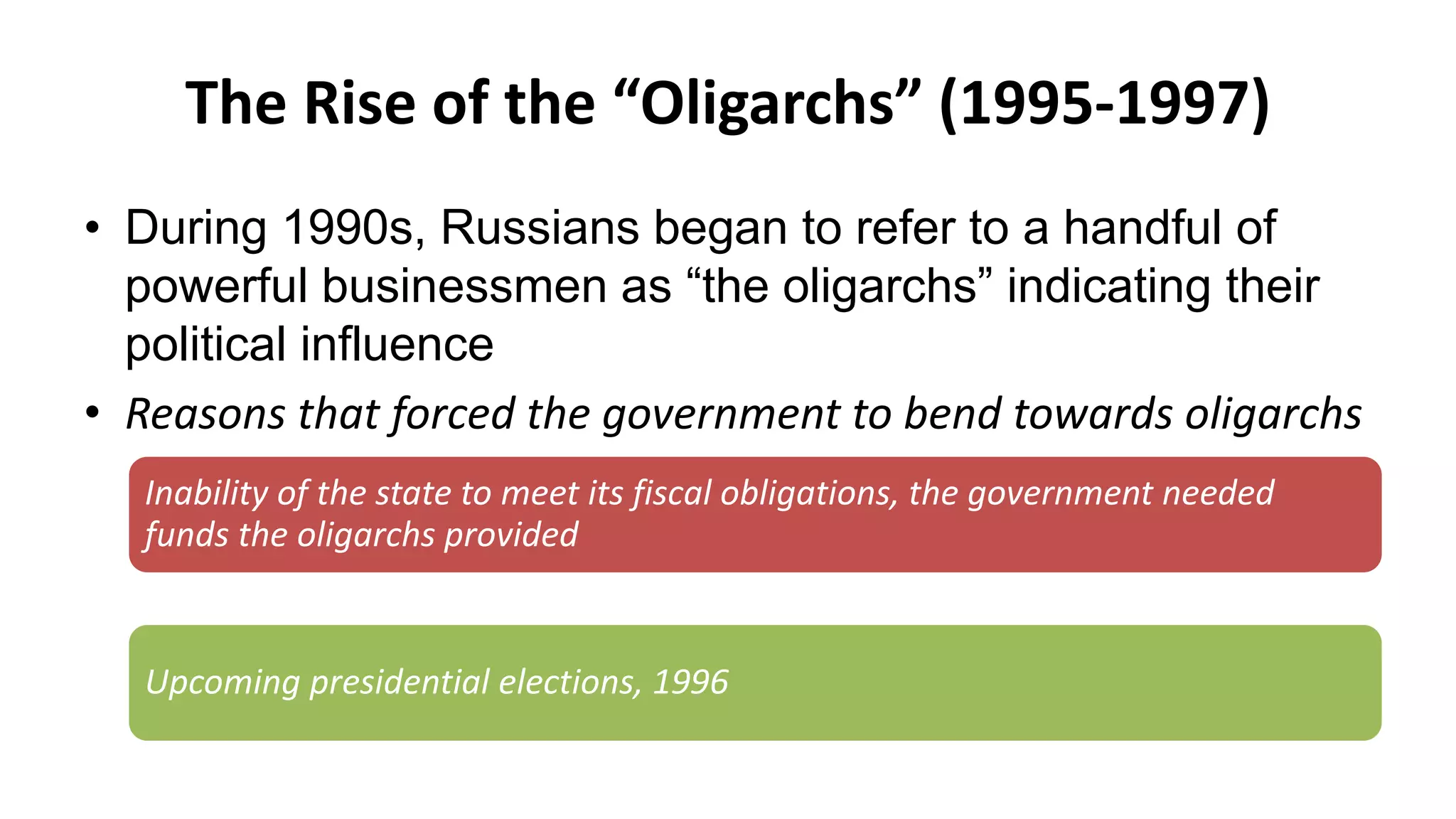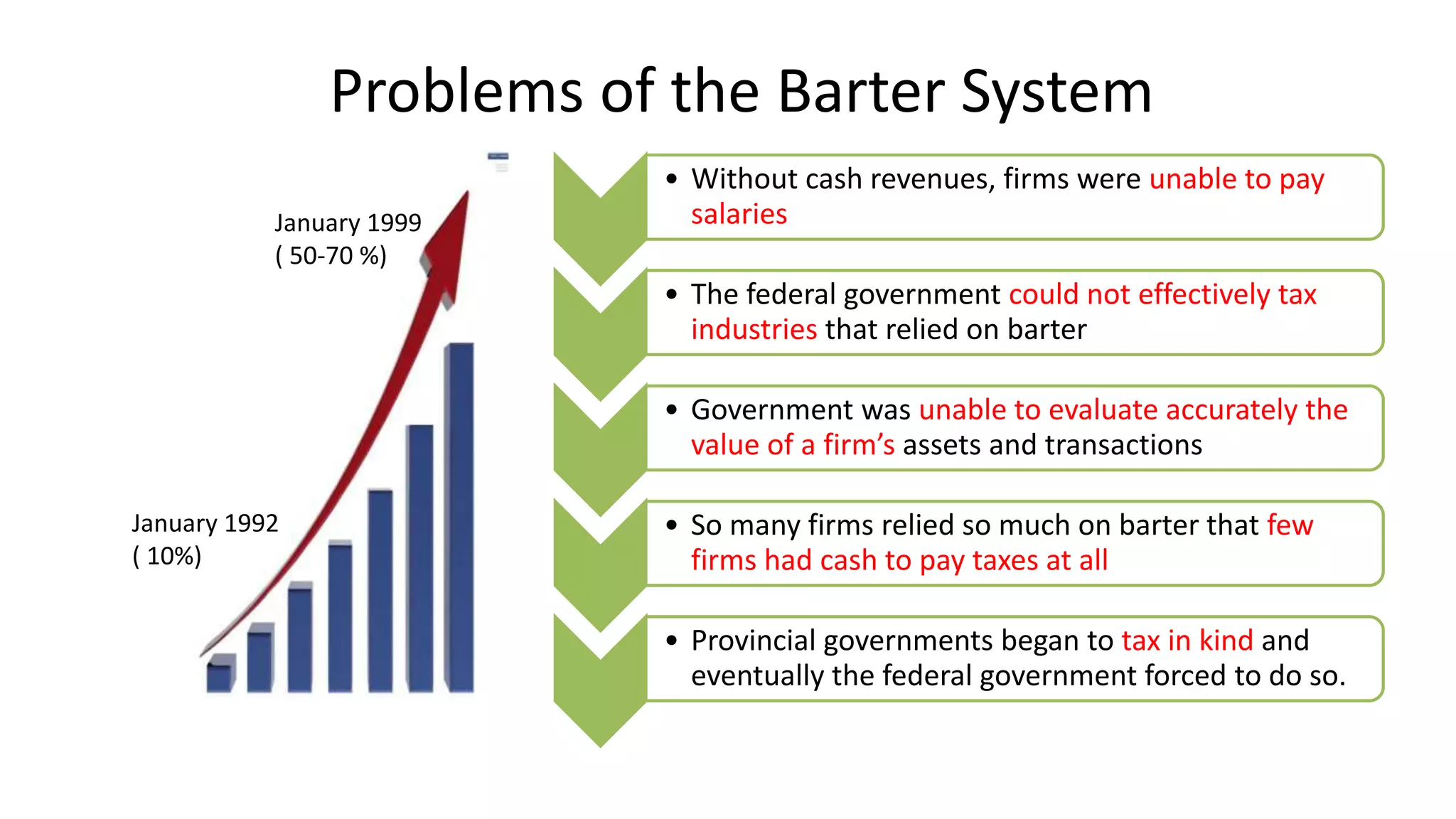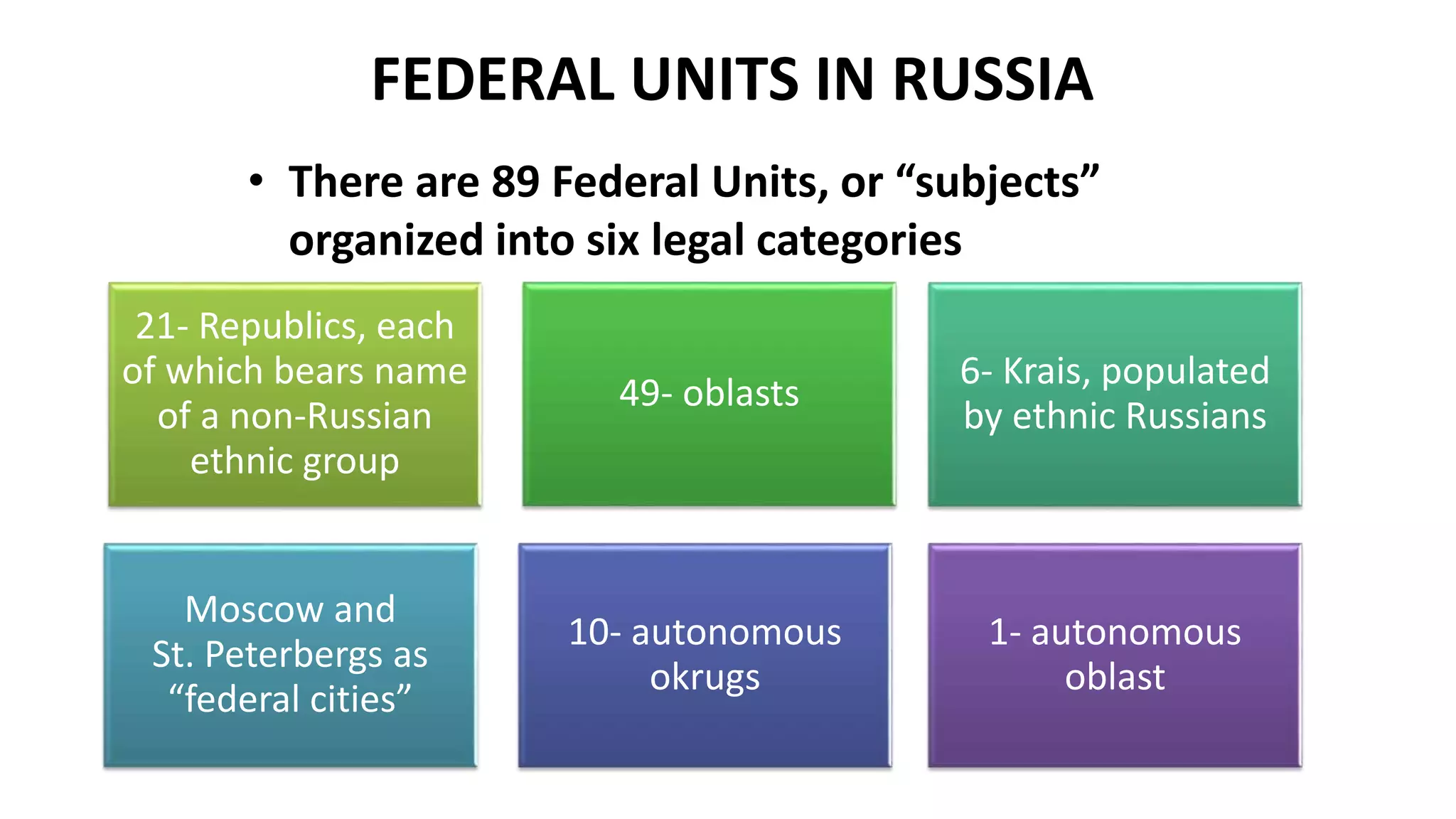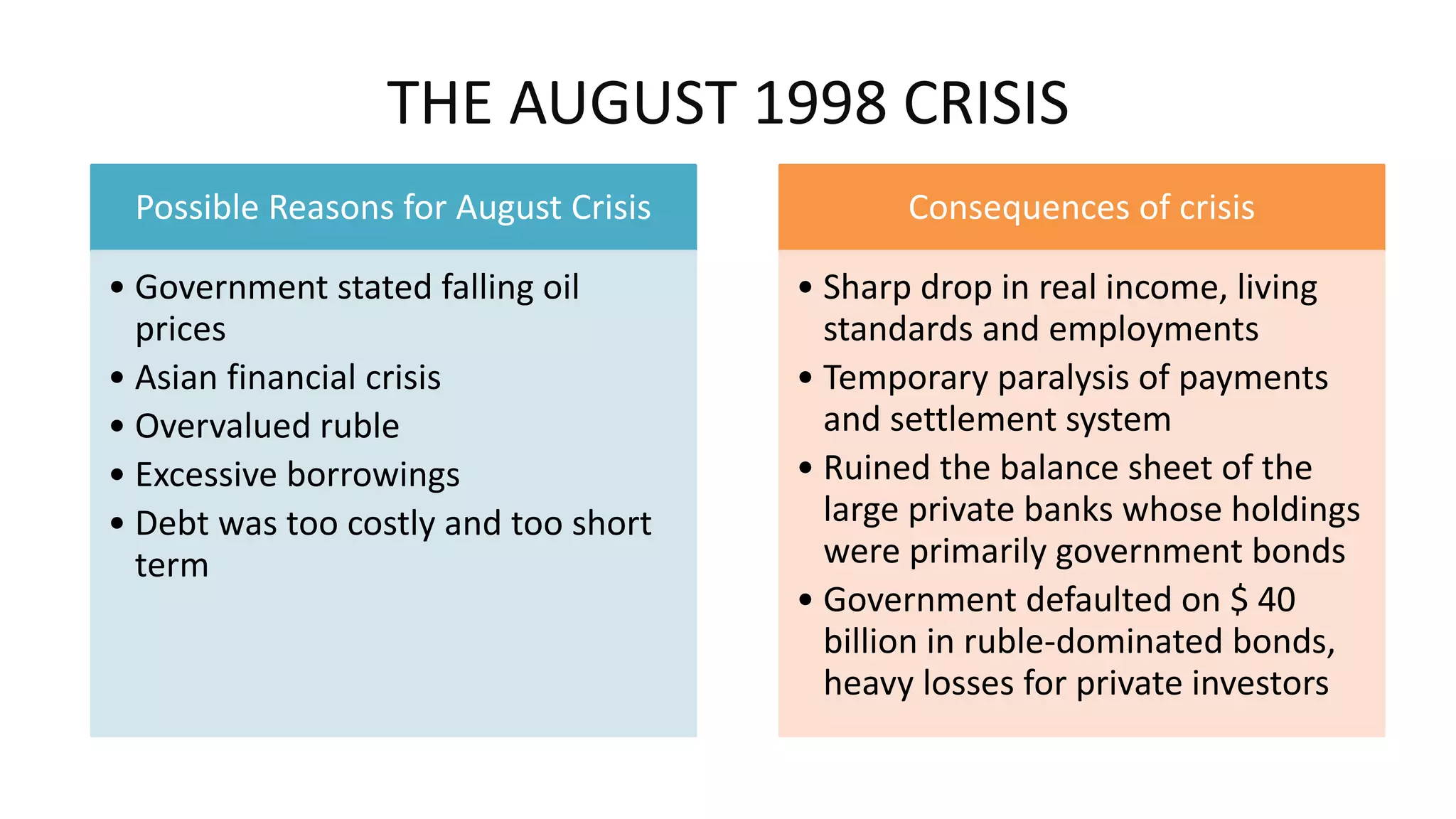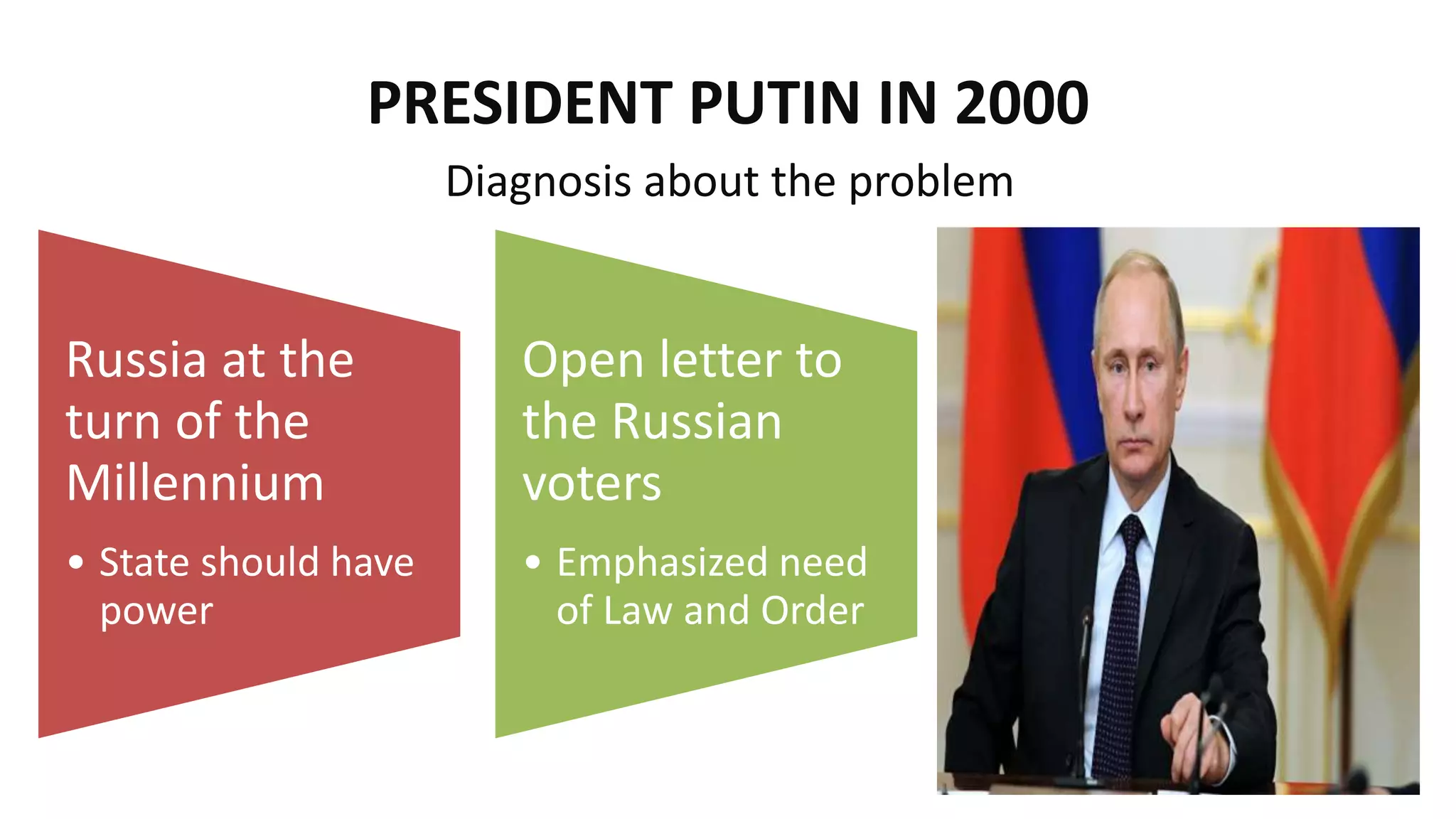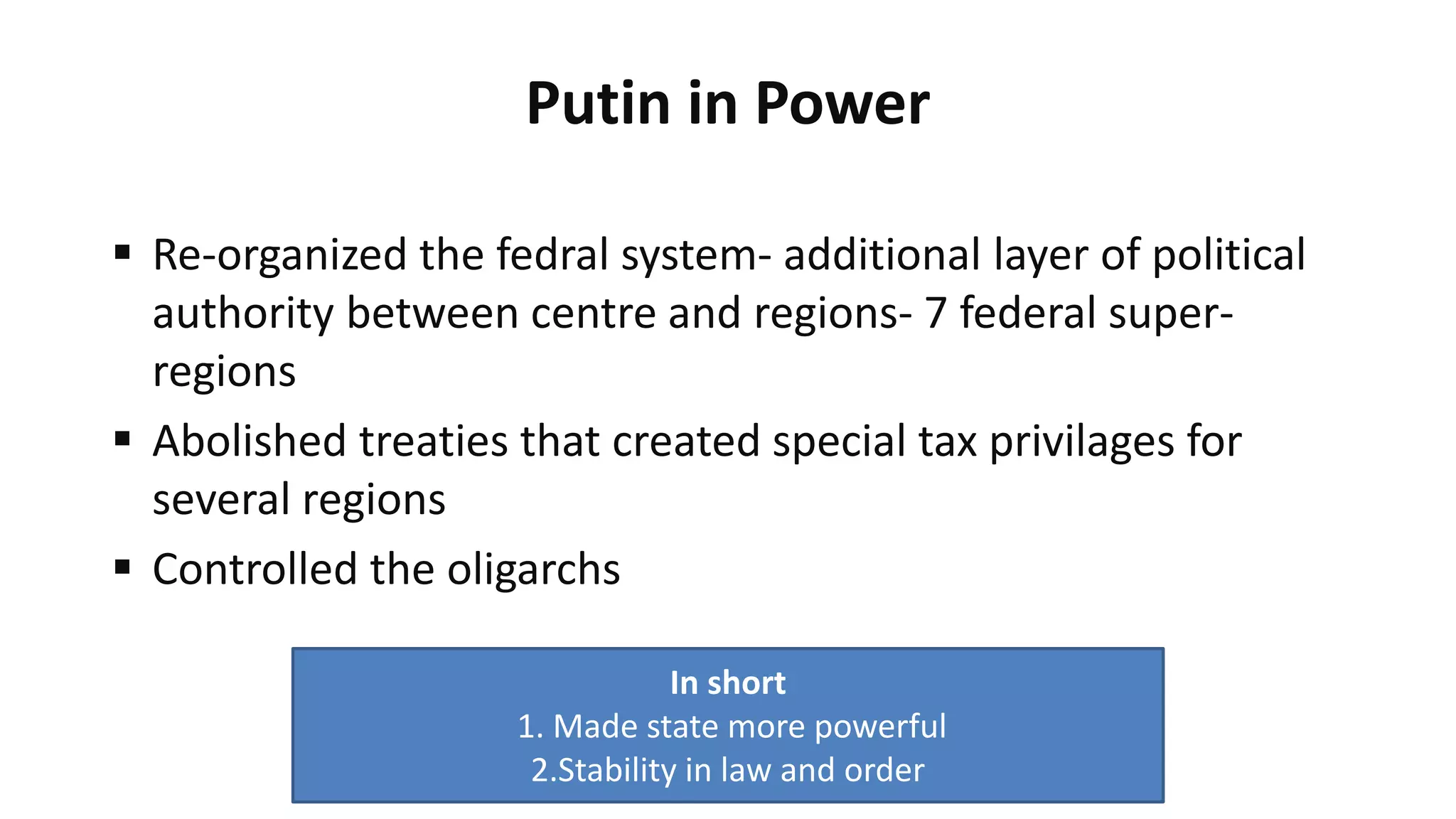The document outlines the historical and political landscape of Russia from the fall of the USSR through the economic reforms under Boris Yeltsin, leading to profound challenges such as hyperinflation, privatization issues, and the rise of oligarchs. It highlights the shift from a state-controlled economy to a market-oriented system and the subsequent impacts on Russian society, including a demographic crisis and political instability culminating in Vladimir Putin's rise to power. The presentation discusses various socio-economic policies, including privatization strategies and the challenges faced during economic reforms, setting the stage for contemporary Russian governance.


